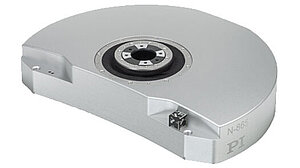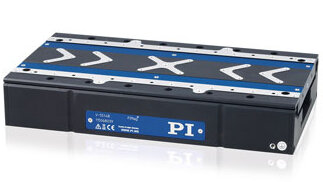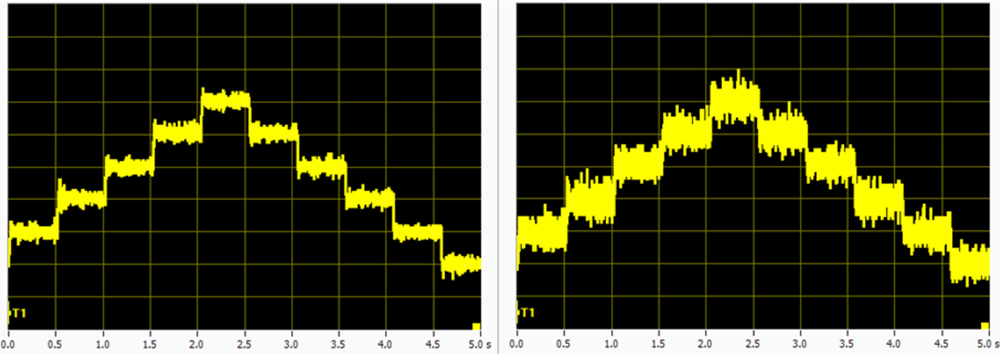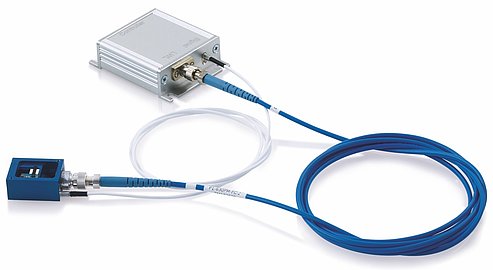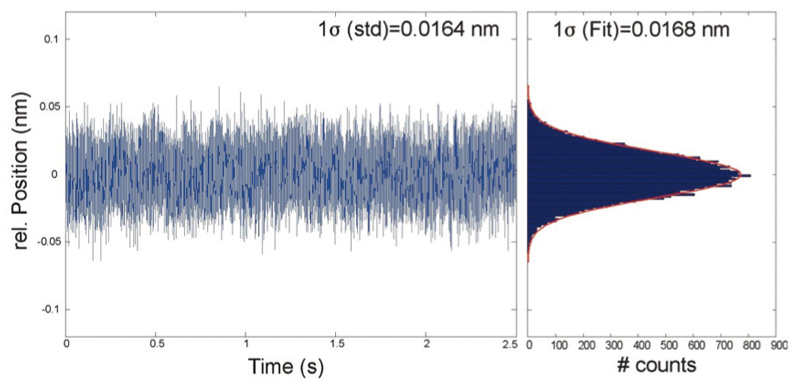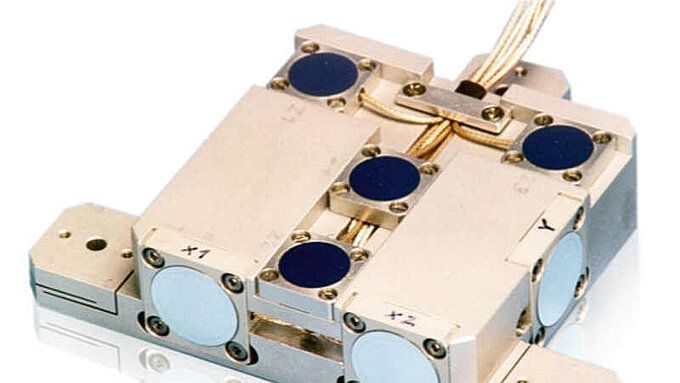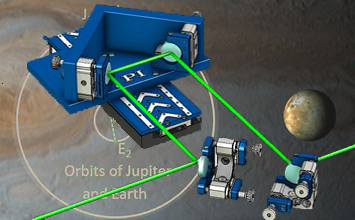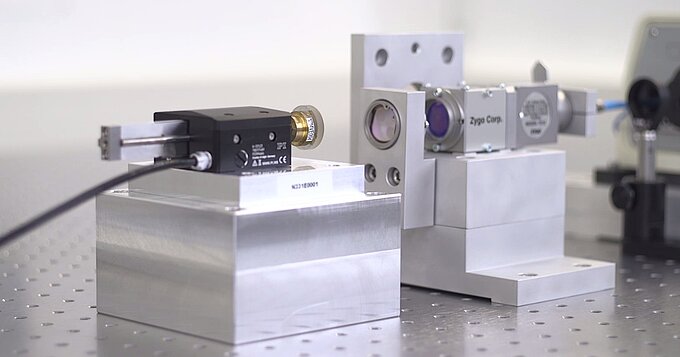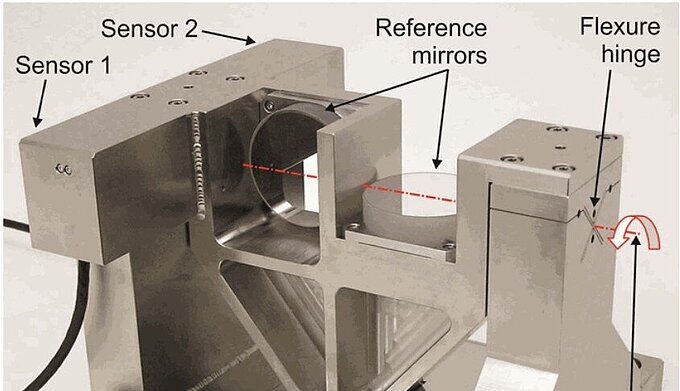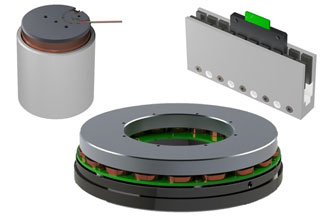PIOne Interferometric Position Sensors for Reference Class Nanopositioning Stages
An In-house Development for Picometer Resolution over Large Travel Ranges

In the traditional piezo nanopositioning world, motion ranges are limited to a few 100 microns and sensors, such as capacitance displacement gauges, are established as the gold standard for position feedback, providing sub-nanometer resolution, high linearity, bandwidth, and stability. Due to their analog nature, longer travel ranges come at the expense of low noise levels and bring about a loss of resolution.
Nanopositioning equipment with long travel ranges, such as 3-phase linear motor stages and piezo motor positioners, require digital (incremental) position measuring devices such as optical linear encoders or interferometers.
There is an abundance of linear encoders available on the market, but when it comes to sub-nanometer resolution and extremely high linearity for reference-class nanopositioning systems, the choices are limited or none-existent when mounting space and power requirements are critical.
For these critical applications, PI developed the miniaturized PIone displacement sensor with picometer resolution capability.

Developing the basics as well as their technical realization were both quite challenging tasks. For me as a developer, the result is an exciting combination of optical, mechanical and electronic components functioning as a single product.
Dr. Axel Grabowski
(Head of Sensor Development)
“We developed PIOne because there were no small sensors on the market with a resolution of 1 nm or better," explains Dr. Axel Grabowski, Head of Sensor Development at PI. “Some of the available sensors achieve such resolutions, but are larger than some of our miniaturized positioning systems, along with power requirements that are too high in many applications. Therefore, the objective for the in-house development was to design a small nanopositioning sensor with maximum resolution and moderate energy consumption. With the PIOne incremental position sensor, we have succeeded.”
Picometer Resolution
The PIOne sensor head contains a Mach-Zehnder interferometer, where the optical paths are equalized and fully symmetrical, compensating for environmental influences such as temperature and humidity.
The resolution of the incremental sensor, i.e. the smallest measurable displacement of the measuring head relative to the scale, is essentially determined by the length of the sensor signal period (encoder pitch), the noise of the processing electronics, and the electronic interpolation factor.
However, since interpolation factor is limited by the signal noise, it cannot be set arbitrarily high – the shorter the signal period, the higher the effective resolution and linearity.
The PIOne sensor achieves a resolution of 20 picometers and better, thanks to its small signal period of 0.5µm and optimized signal processing circuit. In this instance, interpolation with a factor of 4,000 is possible without any noise penalty.
Since the signals of the PIOne are compatible with many PI motion controllers, the sensor can be used in nanopositioning systems with different drive technologies including voice coils, 3-phase motors, and piezo ceramic motors.
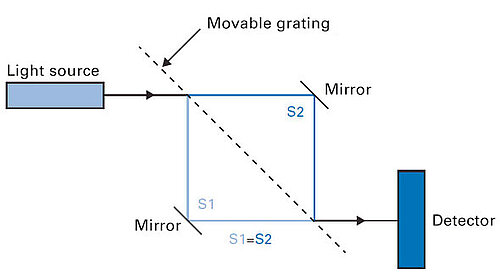
Blog Categories
- Aero-Space
- Air Bearing Stages, Components, Systems
- Astronomy
- Automation, Nano-Automation
- Beamline Instrumentation
- Bio-Medical
- Hexapods
- Imaging & Microscopy
- Laser Machining, Processing
- Linear Actuators
- Linear Motor, Positioning System
- Metrology
- Microscopy
- Motorized Precision Positioners
- Multi-Axis Motion
- Nanopositioning
- Photonics
- Piezo Actuators, Motors
- Piezo Mechanics
- Piezo Transducers / Sensors
- Precision Machining
- Semicon
- Software Tools
- UHV Positioning Stage
- Voice Coil Linear Actuator
- X-Ray Spectroscopy


